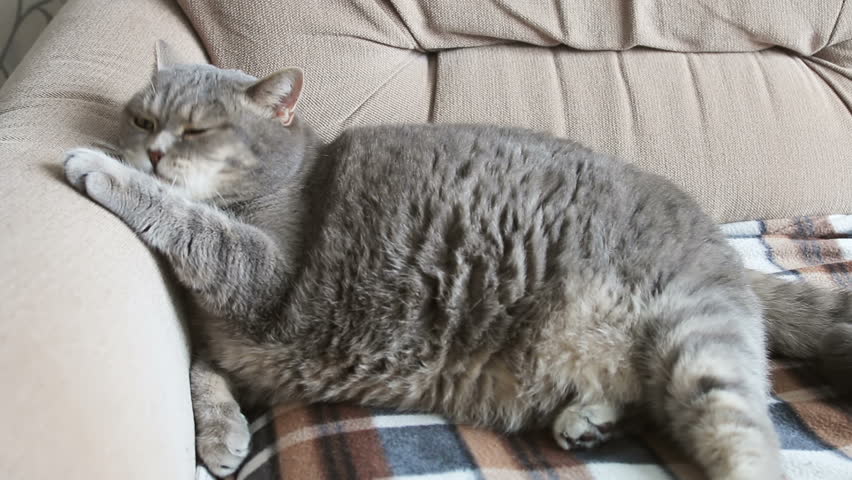Has your favourite cat become a little tubby?
You can help your fat cat slim down safely. But be forewarned: It won't happen overnight.
Healthy weight loss
Researchers at the University of Illinois put eight overweight neutered male cats on a diet for 18 weeks. They wanted the cats to lose enough weight to be noticeable but not enough to put their health at risk.
The study was published in the American Journal of Veterinary Research.
"The intent with this diet was a healthy weight loss: getting rid of fat while maintaining lean mass. The big question was how much it takes to make cats lose weight, especially lazy neutered males?" asked Kelly Swanson, a professor in the department of animal sciences.
"It turns out you have to keep reducing their food intake because they're not very active. It takes a long time," he said in a university news release.
The goal was to help the cats shed 1.5% of their body weight per week. That's in line with recommendations from the American Animal Hospital Association.
Changes in gut bacteria
Faster weight loss risks liver trouble. "They can't handle that much," Professon Swanson said.
The researchers started by reducing the cats' food intake by 20%, and then kept cutting it back every week – just like people might do to see continued results on the scale.
"When we go on a diet ourselves, we might lose a lot of weight in the first few weeks and then hit a road block. Same with these animals," Professor Swanson said.
"We had to keep going down, but it can be hard to convince a pet owner to do that. You might get owners to reduce intake from 60 to 50g per day, but we're telling them they might have to go to 45 or 40g. We got really low, but we were monitoring them so they were healthy," he explained.
Little change in activity level
As the cats lost weight, the researchers noticed that some types of bacteria in their guts became more abundant, while others decreased. These changes may be beneficial but more research is needed, the study authors said.
A 2008 Canadian veterinary Journal article cautioned that for a diet to be satisfactory, it must contain all of the necessary nutrients in the proper proportions, be sufficiently palatable and digestible for the pets to meet their nutritional needs in the volume consumed, and it must be safe.
A 2012 SkeptVet article concluded that there wasn't a big difference in the effectiveness of dry, raw and cooked diets for cats.
Professor Swanson's team also watched to see if the cats became more active as they slimmed down.
"Their activity level didn't change much," Professor Swanson said. "Toward the end, they were becoming a little more active, but not statistically [significant]."
Even so, he said owners should encourage their cats to get as much exercise as possible by playing with them and placing food bowls farther from their favorite resting spots.
Fuente: www.health24.com
